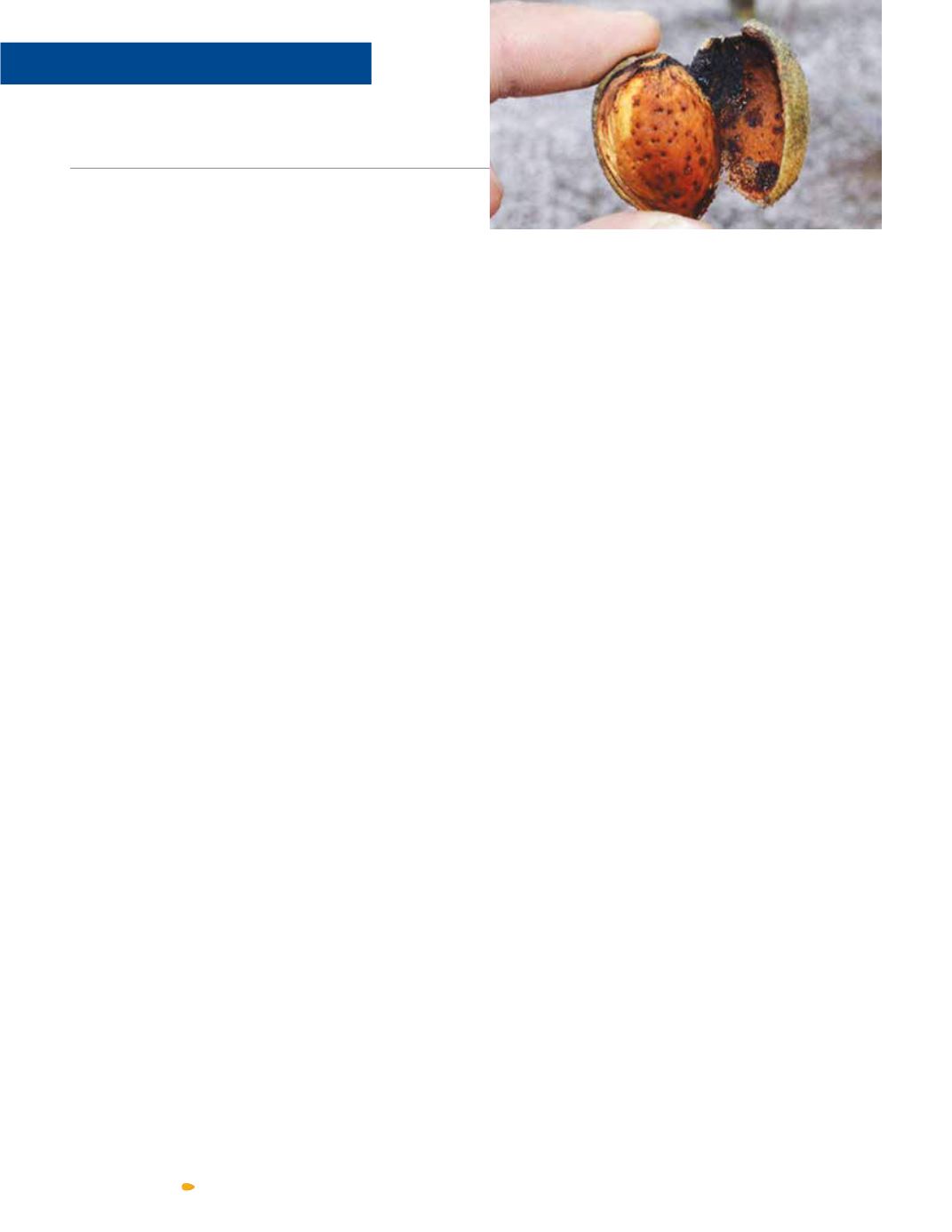
TIME TO CONSIDER
Winter is here. Doesn’t the year go fast
?
The days are
shorter, the nights are cooler, and things are a little bit
less hectic around the farm. Even as operations shift more
to the end-of-year bookwork, there are plenty of tasks
that must be planned and completed now in order to
maximize the return on our orchard operations next year.
Below are a few considerations for your operation.
Equipment Maintenance
Performing annual maintenance on equipment will help
maintain longevity and performance. Working on rigs
now will provide the opportunity to test equipment with
the dormant spray applications. Rig pumps should be
checked to determine if they are able to maintain proper
pressure. Nozzles should be checked to confirm that the
size and gallonage rate are to specifications. Plugged
orifices should be cleared or replaced. If wear is evident
on orifices, nozzles, and swirl plates, they should be
replaced. Worn nozzles will reduce spray coverage and
increase pesticide usage, leading to lost money from
disease and insect infestation and off targeted pesticides.
Both spray and herbicide rigs should be checked.
Spur Sampling
Spur sampling should occur during the winter to
determine if delayed dormant treatments for scab or
scale are needed. With increasing scale pressures
observed, this practice is recommended for all mature
orchards. More information can be found at
.
ucanr.edu/PMG/C003/m003dcdmtspursmpl.html or
web search “UC IPM Almond Spur Sampling.”
Winter Sanitation for Navel Orangeworm
(NOW) Control
NOW damage levels were very high in 2017. This was
due to the inability for many operations to sanitize in the
winter of 2016-2017 due to rain, the expanding footprint
of almonds and pistachios and the hot temperatures
experienced after hull split.
The most effective way to reduce over-wintering NOW
populations is sanitation. By removing the ‘mummy’
nuts from the tree and destroying them by the end of
February (when moths begin to emerge), NOW damage
at harvest can be reduced. These nuts serve as the
overwintering point for the pupae and developing larvae,
and are the ONLY in-season food source for adults and
second flight larvae.
The recommended industry practice is to reduce the
average mummy nut count to less than two per tree.
This recommendation was developed by performing
research and reviewing the data collected from plots
throughout the San Joaquin and Sacramento Valley. The
research showed that for every mummy nut left in the tree,
1 percent damage from NOW should be expected.
In other words, 5 mummies per tree equals 5 percent
NOW damage. Therefore, in order to meet the industry
standard of 2 percent NOW damage levels, there
should be 2 or less mummies per tree. Recent research,
however, conducted by Brad Higbee (Paramount Farms)
and Joel Siegel (USDA-ARS) has shown that a greater
reduction of mummy nuts is needed in areas with higher
NOW pressure. In Kern County, they have found that the
standard for sanitation has to be less than 0.7 mummy
nuts per tree in order to keep NOW damage below the
industry standard of 2 percent. They also found that the
quantity of mummies on the ground influences NOW
damage; having more than 8.9 ground mummies per tree
increased NOW damage above the 2 percent industry
standard. These results were drawn from research
conducted over a 5-year period reviewing data from
plots established on fifty orchards.
IN YOUR ORCHARD
Mummies should be removed to reduce the overwintering
population of navel orangeworm. Mummies are the only food
source for larvae until hull-split next year. Pupae and larvae can
survive on kernels and hulls.
4 2
A L M O N D F A C T S


